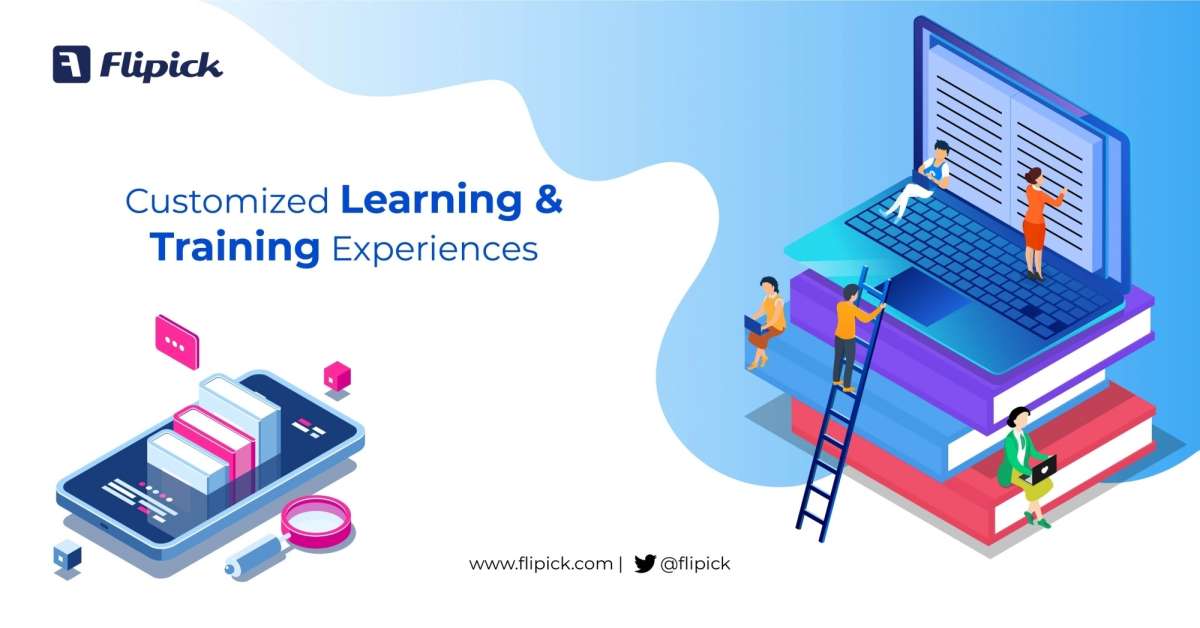‘AI-powered tools can help institutions streamline administrative tasks and optimise resource allocation,’ says Ravi Dugal, Flipick’s Founder and CEO
As the online learning space goes through a definitive churning in a hybrid mode in the ChatGPT era, Flipick has doubled down on offering artificial intelligence (AI)-driven immersive learning experience to its customers.
The company has industry-leading SaaS-based Learning Management System (LMS) for higher education and corporate training in the US, the UK and India.
The LMS is a multi-tenant, enterprise-grade platform that provides adaptive learning and assessments, ensuring the best possible learning experience for all users.
Moreover, CourseBOT, an AI-assisted course builder with SME collaboration and DocuBOT are helping thousands of students get conversational chats with the content to have a better learner perspective.
Ravi Dugal, Flipick’s Founder and CEO, told IANS that AI-powered tools can help institutions streamline administrative tasks and optimise resource allocation.
Here are excerpts from an interview:
What is Flipick’s vision? What is your USP which differentiates you from peers in your industry?
Flipick has a vision of delivering an immersive learning experience with a fully-integrated Learning Management System and interactive courses. What sets us apart from our peers in the industry is our unique value proposition, which includes:
Multi-tenant LMS: Flipick allows for hundreds of client portals to operate within the same instance. Publishers like Pearson have 100+ institutes, or Clarivate USA, have 300+ hospital groups. This approach allows for a shared infrastructure and custom content for all clients.
Adaptive Learning: Our platform leverages adaptive learning to provide a tailored experience for each student.
LTI Compliance: Flipick is both an LTI-compliant server and consumer, which means it integrates seamlessly with other LTI-compliant systems.
AI-powered Course Creation: We use AI and CourseBOT to collaborate with SMEs in building courses that are automated, personalized and engaging.
AI Empowered Analytics: Our platform uses AI to analyze a student’s learning patterns and personalize content to their area of weakness, creating a dynamic learning experience.
Predictive Analysis: Flipick offers predictive analysis of a student’s learning journey, helping them stay on track and achieve their goals.
GMAT Style Assessments: Our platform offers GMAT style adaptive assessments, which are known for their accuracy and relevance.
Overall, Flipick is committed to providing a differentiated, engaging, and personalized learning experience that sets us apart from our peers in the industry.
How do you see AI revolutionizing the education landscape in India over the long term?
AI goes far beyond ChatGPT. We can build our own AI models to address issues facing the Indian education space.
AI has the potential to revolutionise education in India by providing personalised and adaptive learning experiences to students, as well as enabling institutions to improve operational efficiency and reduce costs.
AI can help analyze student data and learning patterns, allowing for customized content delivery and targeted interventions to address areas of weakness. It can also assist in grading and feedback, freeing up time for educators to focus on more personalised interactions with students. In addition, AI-powered tools can help institutions streamline administrative tasks and optimize resource allocation.
We are building CourseBOT, an AI-assisted course builder with SME collaboration. Another revolutionary companion product is DocuBOT.
This uses a custom AI model to index education content in all formats — SCORM, video, PDF, PPT, Word, audio and interactive HTML. A student can have conversational chats with the content to have a better learner perspective
The biggest impact can be in providing adaptive assessments similar to GMAT. This allows a much better method of evaluation of the student performance. Question banks — MCQ and essay-type can be generated by AI which also has the ability to grade essay type questions.
Future would see integration with AR/VR and also dynamic content generation based on student needs.

Tell us more about CourseBOT — the AI-assisted automation tool that makes creating and modifying course content easier?
CourseBOT is an AI-assisted automation tool that simplifies and accelerates the process of creating and modifying course content. It uses natural language processing (NLP) and machine learning algorithms to automate repetitive tasks such as formatting, tagging, and indexing. CourseBOT can also generate quizzes, tests, and assessments based on the content of the course.
This helps educators save time and focus on higher-level tasks such as course design and pedagogy. In addition, CourseBOT can help ensure consistency and quality across courses and improve accessibility by generating alternative formats such as audio and video.
CourseBOT can generate original content but is designed to work with a subject matter expert (SME).
CourseBOT written content is moderated and updated by SME. It writes content based on the curriculum provided by SME. This can further be moderated and updated by SME.
CourseBOT can enhance content written by SME and can build interactive eLearning content sourced from a text book which can be moderated and updated by a SME.
Can you tell us about some of your customer success stories (top 2-3) of your publishing partners and clients because of leveraging your product offerings?
Clarivate, USA is one of the top level training providers for healthcare content. With 300+ hospital groups and hundreds of facilities, they needed a platform that could be multi-tenanted. Segments of content can be common, yet some parts may need to be customised for specific hospitals. With 50,000 users, they are one of our largest platform deployments.
Pragmatic Institute, USA are leading providers for training related to product management and data sciences. Training courses, learning and events management are effectively handled by the Flipick LMS platform.
Pearson are the world’s known educational publishers. MePro is a learning product aimed at teaching English to adults. Mapped to the Global Scale of English and CEFR, MePro has been deployed by hundreds of institutes in India for adaptive learning.
The Indian Institute of Banking and Finance is the premier Institute for developing and nurturing competent professionals in banking and finance. Every week an online exam is conducted for up to 5,000 candidates on Flipick assessment platform.
What has cloud technology and AWS enabled you to do better?
A: Cloud technology and AWS have enabled us to offer a scalable, secure, and cost-effective platform for delivering educational content and services. AWS provides us with a flexible and reliable infrastructure that can handle fluctuations in traffic and demand.
We can also quickly deploy and manage resources, reducing the time to market for new features and services. AWS also offers a range of security and compliance features that ensure the confidentiality, integrity, and availability of our platform and our customers’ data.
Running on AWS has allowed us to achieve a number of business outcomes and benefits.
In terms of business outcomes, what benefits have you experienced as a result of running on AWS?
We have been able to streamline our workflows and automate many routine tasks, resulting in increased efficiency and productivity. We have customers who have a handful of users to others who have 50,000 users. AWS features of load balance and elastic computing have been very useful to scaling the platform on demand.
By leveraging AWS’s pay-as-you-go model and optimizing our resource usage, we have been able to reduce our infrastructure and operational costs. For example, IIBF online exams are conducted only on Tuesday. The AWS servers are switched on just for the duration of the exams resulting in a huge saving on costs
AWS’s agility and flexibility have allowed us to quickly prototype and deploy new features and services, reducing the time to market for our offerings. A well-configured server infrastructure of development, staging and production helps to manage the process of releasing new features in a well-tested production environment
AWS’s resource management tools have helped us optimize our resource allocation and utilization, ensuring that we have the right resources at the right time.
By using AWS’s global network of data centers and content delivery networks (CDNs), we have been able to reduce latency and improve the performance of our platform. For video based courses, we have also enabled adaptive bitrate streaming that allows the streaming speed to be managed as per the consumer’s bandwidth and device capabilities.
AWS’s high availability and disaster recovery features have helped us ensure that our platform is always available and resilient to disruptions. For mission control applications, we have employed servers at two locations with automated synchronisation.
AWS’s monitoring and analytics tools have helped us improve our visibility and insight into our platform’s performance and usage, enabling us to make data-driven decisions and improve our operations.
AWS’s management tools have helped us automate many routine tasks and improve our overall management efficiency. AWS’s security and compliance features have also helped us mitigate risks.














